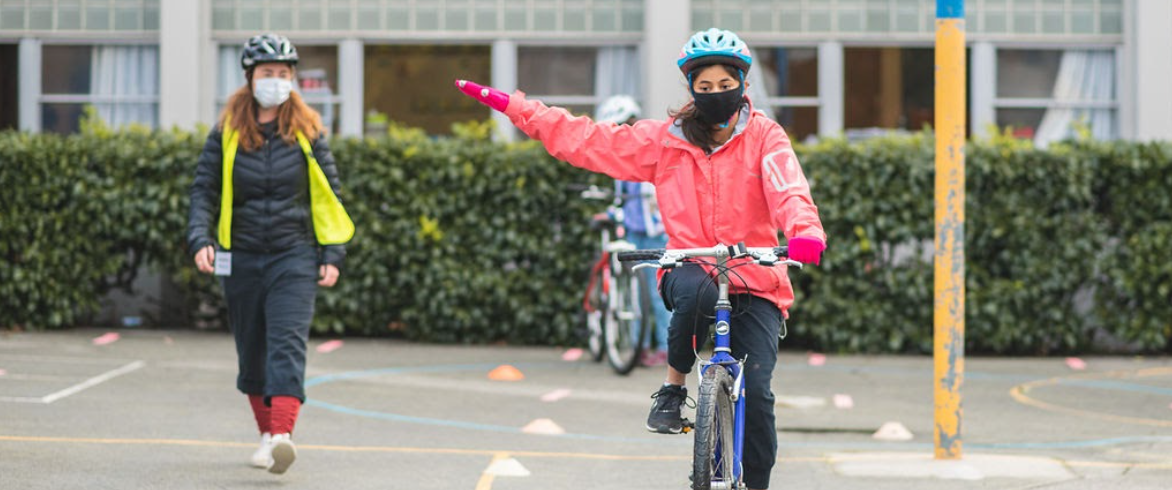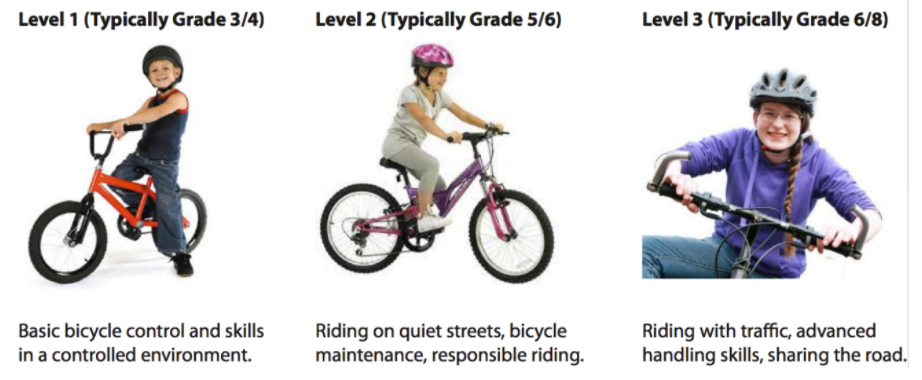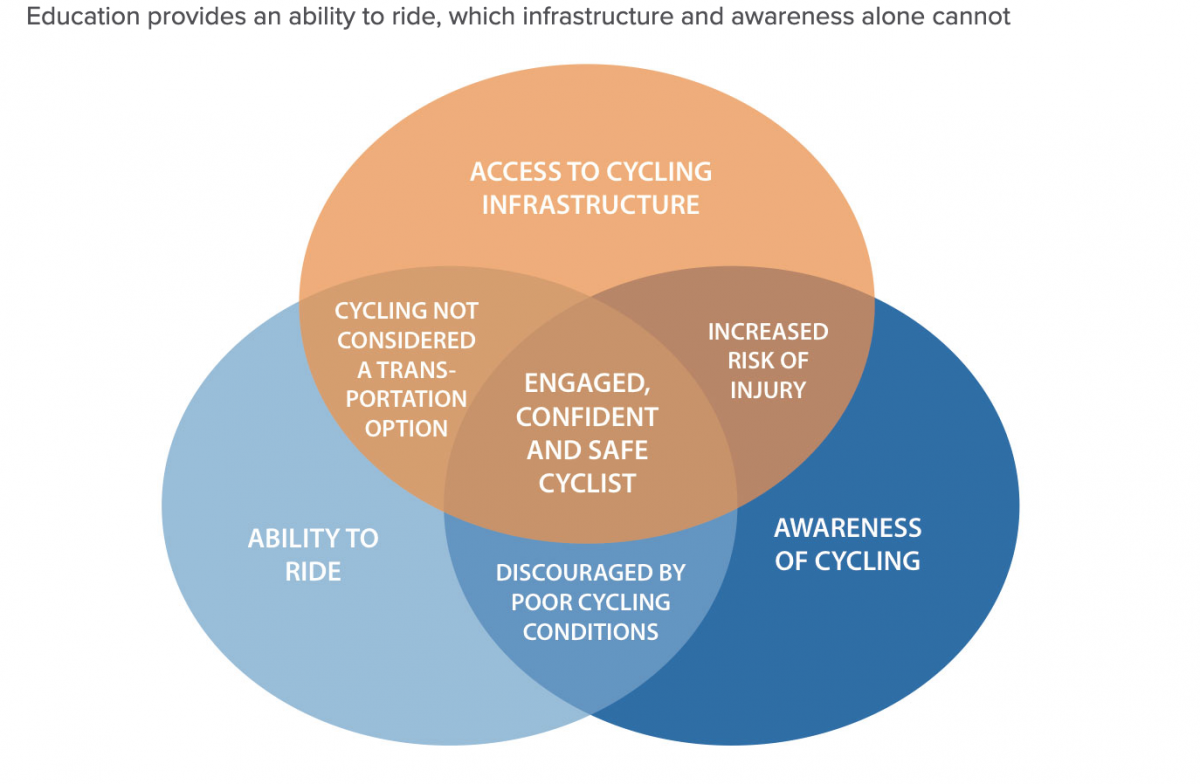Main menu
Bike Right

Teaching a child to ride a bicycle provides them with the freedom and independence they need for healthy growth, exploration and development.
The development of the Bike Right standard was a collaborative initiative from 2011-2016 by organizations across BC which recognized the broad benefits of active transportation cycling. The goal of Bike Right is to make cycling education accessible to all children and youth in British Columbia, to increase cycling rates, thereby improving kids’ safety, health, and quality of life. Bike Right stakeholders developed and peer-reviewed a cycling education framework which provides a basis for efforts to encourage the BC government to implement and fund the delivery of systemic cycling education to all youth through schools.
With the Bike Right standard complete, BC is ready for Everyone Rides Grade 4-5, the delivery of school cycling education for all kids. The Ministry of Transportation and Infrastructure is currently funding year two of this program.
About
The Bike Right initiative seeks the implementation of cycling education in all BC elementary schools. The framework has established universal standards for cycling training, and it seeks to provide accreditation for instructors, and ensure accessibility to effective cycling education for children and youth across the province. Bike Right is a three-level standard setting out the skills that should be achieved at the end of each level of training. This is not a curriculum so it allows training approaches to be grandfathered in and regional variations to match local needs.

Image Caption: Three children riding bikes; each child denotes a different level of bike education. From left to right: Level 1 (Typically Grade 3/4 student): the focus should be on basic bicycle control and skills in a controlled environment. Level 2 (Typically Grade 5/6 student): the focus should be riding on quiet streets, bicycle maintenance, and responsible riding. Level 3 (Typically Grade 6/8 student): the focus is on riding with traffic, advanced handling skills, and sharing the road.
The Bike Right standard was developed and confirmed in 2016 by a diverse group that represents cycling stakeholders and education experts from over 20 communities across BC, including representatives from community groups, educators, researchers, local government, public health, and the private sector.

Image Caption: A logo slurry. Includes the following organizations' logos: TransLink, Travel Smart, Bike to Work Victoria, City of Vancouver, Share the Road Cycling Coalition, LifeCycle, HUB Cycling, Greater Victoria Cycling Coalition, Comox Valley Cycling Coalition, City of Kelowna, Island Pathways - Salt Spring Island, British Columbia Cycling Coalition, Can-Bike, Ecopath Planning, Uuniversity of British Columbia, HUB for Active School Travel, Captial Regional District, City of Vernon, Kelowna Area Cycling Coalition, alta Planning and Design, Simon Fraser University, and steer davies gleave.
Bike Right is modelled on best practices that have proven successful in a number of jurisdictions around the world, including the UK`s Bikeability initiative.
The bicycle has an important role to play if BC is to realize its ambitious health, environmental and economic goals. Encouraging cycling in BC has predominantly been focused on increasing access to and awareness of cycling through investments in infrastructure and facilities. A necessary, but missing complement to these measures is to engage those interested in cycling with the ability to do so confidently and safely through investments in education and training.

Image Caption: A Venn diagram titled "Education provides an ability to ride, which infrastructure and awareness alone cannot". The Venn diagram concludes that an engaged, confident, and safe cyclist is someone who has the ability to ride, the awareness of cycling, and access to cycling infrastructure.
While infrastructure is critical, we cannot rely solely on the draw of facilities, and must invest strategically to stimulate a change in behaviour to achieve value for money. A 2005 study of six North American cities that made similar investments in cycling infrastructure found that those which also invested in complementary programming (awareness, education, etc.) saw significant increases in cycling rates, while those that invested in infrastructure alone did not.
Another study compared cycling rate increases in nine North America cities over the same period, and noted that despite investing the most in infrastructure of any city studied, New York saw the smallest growth in cycling rates, which “emphasize[d] the need to implement a coordinated package of complementary policies” and illustrated the limited value of infrastructure investments “unless supported by many other kinds of programs and policies.” On the other hand, the study noted that Portland, which saw the greatest increase in cycling rates among cities studied, owed its success to its implementation of “a truly comprehensive, well-integrated, long-term package of infrastructure, programs and policies to promote cycling.”
Education provides an ability to ride, which infrastructure and awareness alone cannot.
Every young person in BC should be able to navigate their community in a safe, active, and fun way. Bike Right provides a peer-reviewed cycling education standard.
Framework
OBJECTIVE
- To increase cycling activity among British Columbia's children and youth, and thereby improve their safety, health, and quality of life, through effective and accessible cycling education.
APPROACH
- Implement the provincially recognized standard for effective cycling skills & safety education
- Build capacity to ensure access to and demand for cycling skills & safety education throughout the province
COMPONENTS
- Use certification process that follows Bike Right evidence-based, peer-reviewed standards
- Resources to build capacity for local cycling education delivery in all communities, ensuring access for remote, at-risk, and marginalized communities
- Instructor training regime to train cycling educators who can teach to the standard
- Promotional campaign to raise awareness of the positive connection between children and bicycles, and the availability of school cycling education in all BC communities
- Evaluation of cycling education outcomes and delivery for further improvements and success tracking
- Continual delivery of school cycling education to create an ongoing culture of knowledge, skills, and confidence
Contact Us
HUB Cycling is currently delivering Bike Right standard cycling education through the Everyone Rides Grade 4-5 program funded by the BC Ministry of Transportation and Infrastructure. To find out more about Everyone Rides Grade 4-5 click here. To get involved in maintaining and updating the Bike Right standard, contact everyonerides@bikehub.ca.
